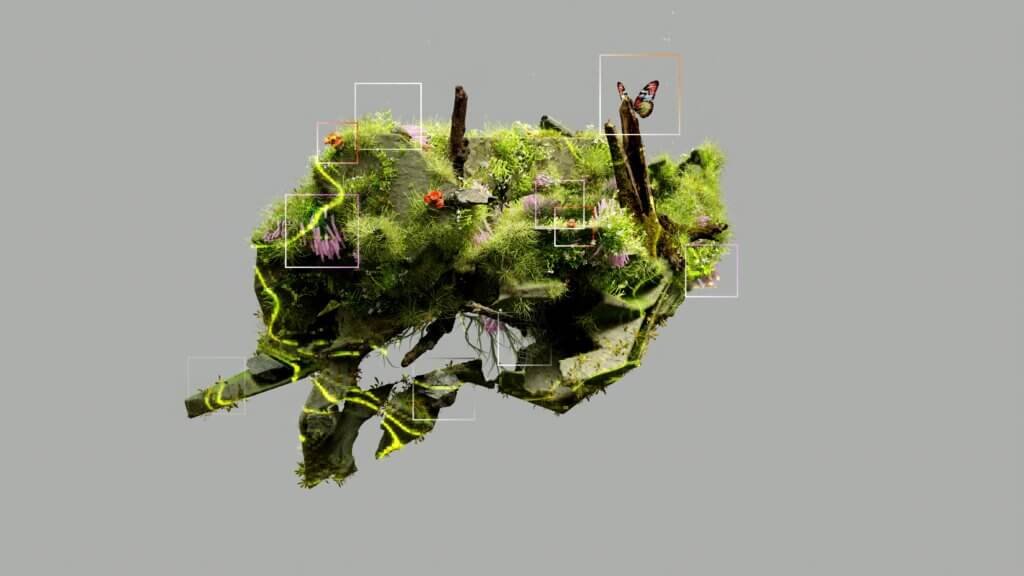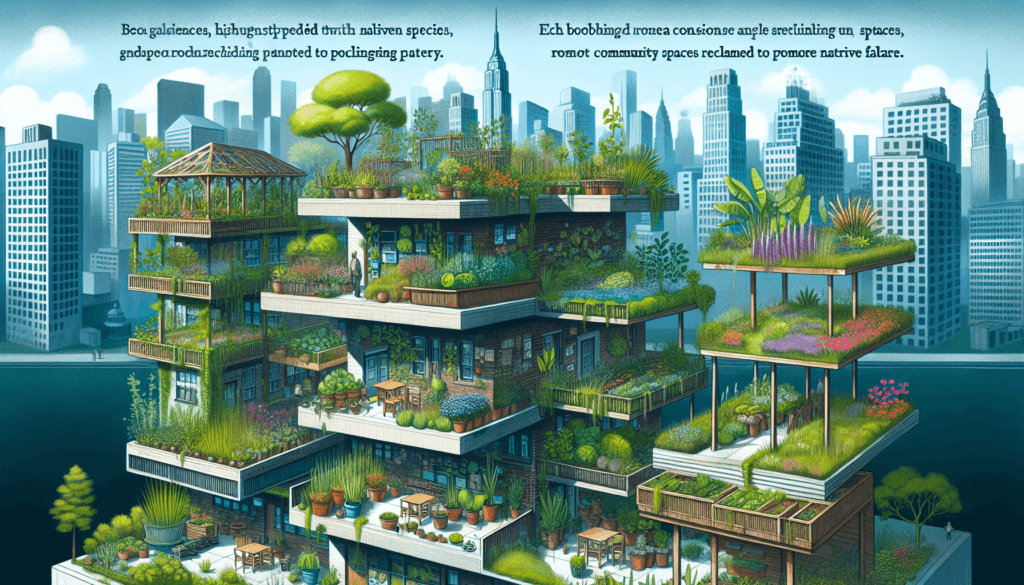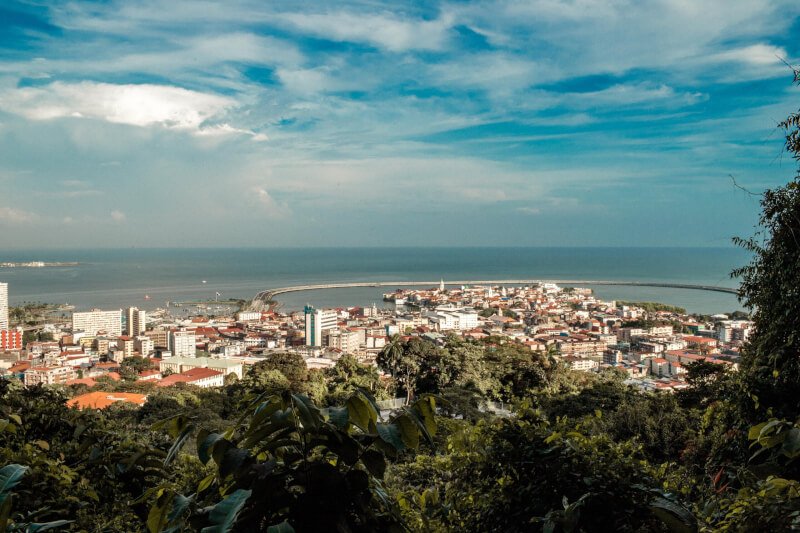In this article, you will discover some of the best methods to successfully grow native plants in an urban setting. Urban environments often present unique challenges to gardening, but with the right techniques, you can create a thriving green space filled with beautiful native plants. From choosing the right species to providing the ideal growing conditions, we will explore practical tips and strategies that will help you bring the natural beauty of native plants into your cityscape. Whether you have a small balcony or a spacious backyard, this article will equip you with the knowledge to cultivate a vibrant urban garden that supports local ecosystems and enhances the overall well-being of your community.

Choosing the Right Native Plants
Researching Native Plants
When it comes to growing native plants in an urban setting, it is essential to start by researching the different species available. Native plants are those that naturally occur in a specific region, and they can offer numerous benefits for urban environments. By researching native plants, you can familiarize yourself with their characteristics, growth requirements, and suitability for urban settings. This knowledge will help you make informed decisions when selecting the right plants for your urban garden.
Identifying Native Plants Suitable for Urban Settings
Not all native plants are suitable for growing in urban settings. Some may be too large or have invasive tendencies that can disrupt the surrounding ecosystem. It is important to identify native plants that are well-adapted to the urban environment. Look for plants that thrive in conditions commonly found in urban areas, such as pollution tolerance, drought tolerance, and the ability to withstand compacted soil. Consulting with local nurseries, botanical gardens, or native plant societies can also provide valuable insights and recommendations.
Considering Growth Requirements of Native Plants
Each native plant has specific growth requirements, such as soil type, sunlight exposure, and water needs. It is crucial to assess these requirements and ensure they can be met in your urban garden. Consider factors such as the amount of space available, the quality of the soil, and the amount of sunlight your garden receives. By understanding the growth requirements of native plants, you can create an environment that supports their optimal growth and ensures their long-term health and vitality.
Preparing the Urban Soil
Conducting a Soil Test
Before planting native plants in your urban garden, it is crucial to conduct a soil test. Urban soils can be heavily compacted and lacking in essential nutrients. A soil test will provide valuable information about the pH level, nutrient content, and overall health of the soil. By understanding the soil composition, you can make informed decisions about the types and amounts of amendments needed to improve the soil quality and create a favorable environment for native plants to thrive.
Amending the Urban Soil
Once you have conducted a soil test and identified any deficiencies, it is time to amend the urban soil. Organic matter such as compost can be added to improve soil structure, drainage, and nutrient availability. Additionally, incorporating organic fertilizers or mineral amendments based on the soil test results can provide essential nutrients that may be lacking. It is important to follow the recommended application rates and methods to avoid over-amending the soil, which can be detrimental to native plants.
Improving Drainage
Compacted urban soil often lacks proper drainage, which can lead to waterlogging and root rot. To improve drainage in your urban garden, consider incorporating organic matter such as compost or vermiculite into the soil. This will help loosen compacted soil, allowing water to drain more efficiently. Additionally, creating raised beds or installing drainage systems can help prevent water from pooling around the root zone of your native plants, ensuring they receive the necessary oxygen for healthy growth.

Providing Adequate Sunlight
Assessing Sunlight Availability in Urban Areas
One of the key factors in successfully growing native plants is providing them with adequate sunlight. In urban areas, buildings, trees, and other structures can block or shade the sunlight, affecting the growth and development of plants. It is important to assess the sunlight availability in your urban garden to determine the areas where plants can receive direct sunlight and areas that are more shaded. This assessment will help you in positioning your plants accordingly and making informed choices when selecting species that thrive in varying light conditions.
Positioning Plants for Optimal Sun Exposure
Once you have assessed the sunlight availability in your urban garden, you can strategically position your native plants for optimal sun exposure. Choose plants that can tolerate the amount of sunlight available in each area of your garden. For example, sun-loving plants should be placed in areas that receive direct sunlight for the majority of the day, while shade-tolerant plants can be positioned in areas that are partially or fully shaded. By positioning your plants correctly, you can ensure they receive the appropriate amount of sunlight to support their growth and overall health.
Creating Shade for Sun-Sensitive Native Plants
In some urban settings, the sunlight can be too intense or excessive for sun-sensitive native plants. To protect these plants from the harsh sun, you can create shade structures such as arbors, trellises, or shade cloths. These structures can provide the necessary shade and protect the plants from excessive heat or sunlight. Carefully selecting the planting locations and incorporating shade structures when needed will help you create a balanced and harmonious environment for your native plants to thrive.
Managing Watering Needs
Understanding Native Plant Watering Requirements
Watering is a critical aspect of growing native plants in an urban setting. Understanding the watering requirements of native plants is essential to ensure their health and longevity. Native plants are typically adapted to the local climate and can often withstand drought conditions once established. However, it is important to provide sufficient water during the establishment phase and during periods of extended dryness. Research the specific watering needs of your chosen native plants and adjust watering frequency and duration accordingly.
Implementing Efficient Watering Techniques
Efficient watering techniques can help conserve water while ensuring your native plants receive the moisture they need. Watering deeply and less frequently encourages plants to develop deep roots, making them more resilient to drought. Consider using drip irrigation systems or soaker hoses to deliver water directly to the root zone, reducing evaporation and water wastage. It is also advisable to water in the early morning or late afternoon to minimize water loss through evaporation. Implementing efficient watering techniques not only benefits your native plants but also contributes to water conservation efforts in urban environments.
Using Rainwater and Greywater
In an urban setting, water resources can be limited, and using alternative water sources can be beneficial for your native plants. Rainwater harvesting is a sustainable practice that involves collecting rainwater from rooftops or other surfaces and storing it for later use in irrigation. This allows you to utilize the natural rainfall to water your plants, reducing reliance on municipal water supplies. Similarly, greywater, which is water collected from sinks, showers, or washing machines, can be reused for irrigation purposes. Implementing rainwater harvesting systems and incorporating greywater into your watering practices can help conserve water and promote sustainability in your urban native plant garden.

Controlling Pests and Diseases
Identifying Common Pests and Diseases
Just like any other garden, urban native plant gardens can also be susceptible to pests and diseases. It is crucial to familiarize yourself with common pests and diseases that may affect your native plants. This knowledge will allow you to identify early signs, take timely action, and implement effective pest control strategies. Look out for pest damage, abnormal growth patterns, discoloration, or wilting leaves. Consulting with local experts or extension services can provide valuable guidance on specific pests and diseases prevalent in your region.
Implementing Integrated Pest Management Strategies
Integrated Pest Management (IPM) is an approach that focuses on long-term prevention and management of pests and diseases by combining multiple strategies. Start by promoting a healthy garden environment through proper plant health practices such as choosing disease-resistant plant varieties and maintaining good soil health. Implementing biological control methods, such as introducing beneficial insects or using microbial pesticides, can help control pests naturally. Mechanical methods, such as handpicking pests or using physical barriers, can also be effective. By integrating these different strategies, you can effectively manage pests and diseases while minimizing the use of chemical pesticides.
Using Organic Pest Control Measures
If pest or disease control becomes necessary, it is advisable to use organic pest control measures in your urban native plant garden. Chemical pesticides can have detrimental effects on beneficial insects, pollinators, and the overall ecosystem. Organic pest control methods, such as insecticidal soaps, neem oil, or homemade remedies using natural ingredients, offer a safer and more environmentally friendly approach. These organic pest control measures can effectively target pests while minimizing harm to beneficial organisms and maintaining the overall balance of your urban garden.
Selecting and Applying Fertilizers
Understanding Native Plant Nutrient Requirements
Like all plants, native plants have specific nutrient requirements for optimal growth and development. Understanding these nutrient requirements is crucial for selecting and applying the right fertilizers in your urban garden. Native plants are generally adapted to the local soil conditions and may not require heavy fertilization. Research the specific nutrient needs of your chosen native plants and choose fertilizers that provide the necessary nutrients in the right proportions. Matching the nutrient requirements of your plants with the proper fertilizers will help support their overall health and vitality.
Choosing Organic and Slow-Release Fertilizers
When selecting fertilizers for your urban native plant garden, consider choosing organic and slow-release options. Organic fertilizers are derived from natural sources and provide a slow and steady release of nutrients to the plants. This helps prevent nutrient runoff and reduces the risk of over-fertilization, which can be detrimental to native plants. Slow-release fertilizers provide a continuous supply of nutrients over an extended period, reducing the frequency of application and ensuring a sustained and balanced nutrient availability for your plants. By choosing organic and slow-release fertilizers, you can promote the long-term health and resilience of your urban native plants.
Applying Fertilizers at the Right Time and Rate
Applying fertilizers at the right time and rate is crucial to avoid over-fertilization or nutrient deficiencies in your urban native plant garden. It is recommended to fertilize native plants during their active growth periods, typically in the spring or early summer. Follow the instructions provided by the manufacturer and apply fertilizers at the recommended rates. Over-fertilization can lead to excessive vegetative growth, increased susceptibility to pests and diseases, and nutrient imbalances in the soil. Applying fertilizers at the right time and rate will ensure that your native plants receive the necessary nutrients without causing any harm or imbalance in the ecosystem.

Mulching and Weed Control
Benefits of Mulching in Urban Native Plant Gardens
Mulching offers numerous benefits for urban native plant gardens. Mulch acts as a protective layer on the soil surface, shielding it from extreme temperatures and reducing moisture loss through evaporation. It helps suppress weed growth, prevents soil erosion, and promotes soil moisture retention. Organic mulch, such as wood chips or straw, also breaks down over time, adding organic matter to the soil and improving its fertility and structure. By mulching your urban native plant garden, you can create a favorable environment that supports the growth and overall health of your plants.
Selecting the Right Mulch Material
When selecting mulch for your urban native plant garden, consider using organic materials that will decompose over time and enrich the soil. Wood chips, straw, or shredded leaves are popular choices for organic mulch. Avoid using materials such as rubber mulch or synthetic materials, as they do not provide any nutritional benefits to the soil and can be harmful to the environment. Additionally, choose mulch materials that are readily available in your area to minimize transportation and support local sustainability efforts.
Implementing Effective Weed Control Measures
Weed control is essential to maintain the health and appearance of your urban native plant garden. Weeds compete with native plants for resources such as water, nutrients, and sunlight. Implementing effective weed control measures will help minimize weed growth and ensure the success of your native plants. Start by manually removing weeds, taking care to remove the entire root system to prevent regrowth. Applying a layer of mulch around the base of plants can also serve as a barrier, preventing weed seeds from germinating. Regular monitoring and quick action to address weed infestations will help you maintain a weed-free environment for your urban native plants.
Proper Planting Techniques
Preparing the Planting Hole
Proper planting techniques are crucial for the successful establishment of native plants in an urban setting. Start by preparing the planting hole to provide an optimum environment for the plant’s roots. Dig a hole that is wide and shallow, ensuring it is large enough to accommodate the plant’s root system without crowding or bending the roots. Loosen the soil in the planting hole to promote root penetration and water movement. This will create a favorable environment for the plant to establish healthy roots and thrive in its new urban home.
Removing Plants from Containers
When planting native plants in an urban garden, it is important to remove them from their containers correctly to avoid damaging the root system. Gently tap or squeeze the sides of the container to loosen the root ball. Carefully slide the plant out without pulling on its stem or leaves. If the root system is tightly wound or root-bound, gently tease or cut the roots to encourage outward growth. Properly removing plants from containers and handling their root systems with care will help ensure a smooth transition and minimize stress during the planting process.
Planting Native Plants at the Correct Depth
Planting native plants at the correct depth is crucial for their overall health and establishment in an urban setting. Dig the planting hole at a depth that allows the plant’s crown (where the stem meets the root system) to be level with the surrounding soil. Planting too deep can suffocate the root system, while planting too shallow can expose roots to excessive heat or cold. Backfill the hole with soil, gently firming it around the root ball to provide stability. Water the newly planted native plants thoroughly to help settle the soil and ensure good root-to-soil contact.

Regular Pruning and Maintenance
Understanding the Importance of Pruning
Regular pruning is essential for maintaining the health and appearance of native plants in an urban setting. Pruning helps remove dead or diseased plant material, promotes better airflow and light penetration, and encourages new growth. Native plants may have specific pruning requirements based on their growth habit and flowering patterns. Understanding the importance of pruning and familiarizing yourself with the specific pruning needs of your native plants will help you effectively maintain their form, vitality, and overall well-being.
Pruning Techniques for Native Plants
When pruning native plants in an urban garden, it is important to use correct techniques to minimize the risk of damage or disease transmission. Start by removing any dead, damaged, or diseased branches with clean and sharp pruning tools. Make clean cuts just above a bud or leaf node to encourage new growth. For shaping or thinning, selectively remove branches to maintain an open and balanced structure. Avoid excessive pruning, as native plants often have natural growth habits that should be preserved. Regular monitoring and pruning based on the specific needs of your native plants will help ensure their long-term health and aesthetic appeal.
General Maintenance Tasks for Urban Native Plant Gardens
In addition to pruning, general maintenance tasks are necessary to keep your urban native plant garden healthy and thriving. Regularly monitor for signs of pests, diseases, or nutrient deficiencies and take appropriate action to address any issues. Remove debris, fallen leaves, or dead plant material to prevent the accumulation of pests or diseases. Monitor soil moisture and water accordingly, ensuring plants receive sufficient hydration without excessive waterlogging. Fertilize as needed based on plant requirements and soil test results. By staying proactive in your garden maintenance, you can ensure that your urban native plant garden remains vibrant and visually appealing.
Promoting Biodiversity and Habitat
Creating Mini Habitats in Urban Settings
One of the benefits of growing native plants in an urban setting is the ability to create mini habitats that support biodiversity and provide valuable resources for wildlife. Native plants provide food, shelter, and breeding grounds for various birds, butterflies, bees, and other beneficial insects. Incorporating a variety of native plants with different shapes, sizes, and flowering times can attract a diverse range of wildlife to your urban garden. By creating mini habitats, you not only contribute to the overall biodiversity in your area but also establish a harmonious relationship between humans and nature in urban environments.
Using Native Plants to Attract Wildlife
Native plants have evolved to provide resources that native wildlife rely on for survival. By strategically choosing and planting native plants in your urban garden, you can attract wildlife and create a thriving ecosystem. Select plants that offer nectar-rich flowers, berries, or seeds for birds, butterflies, and bees. Provide habitat structure with native grasses, shrubs, or trees that offer shelter, nesting sites, or food sources for various species. By understanding the specific needs of local wildlife and incorporating native plants that cater to those needs, you can transform your urban garden into a haven for biodiversity and support the conservation of native species.
Encouraging Pollinators and Beneficial Insects
Pollinators and beneficial insects play a crucial role in maintaining ecological balance and supporting plant reproduction. By encouraging their presence in your urban native plant garden, you can enhance the overall health and productivity of your garden. Select native plants that are known to attract pollinators, such as bees, butterflies, and beetles, with their nectar-rich flowers. Incorporating plants with different bloom times ensures a continuous food source for pollinators throughout the growing season. Additionally, providing water sources and avoiding the use of chemical pesticides will further support the survival and well-being of these invaluable insects. By nurturing pollinators and beneficial insects, you contribute to the pollination of plants and the natural pest control ecosystem, resulting in a thriving and sustainable urban garden.
In conclusion, growing native plants in an urban setting requires careful consideration of various factors, from choosing the right plants to providing appropriate growing conditions. By researching native plants, assessing sunlight and watering requirements, amending the soil, implementing effective pest control measures, and practicing proper planting and maintenance techniques, you can create a successful and vibrant urban native plant garden. Furthermore, by promoting biodiversity, attracting wildlife, and encouraging pollinators and beneficial insects, you contribute to the overall environmental health and sustainability of urban ecosystems. With the right knowledge, techniques, and a friendly approach, you can enjoy the beauty and benefits of native plants in your urban garden while making a positive impact on the natural world around you.

